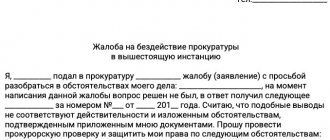The concept of a socially dangerous act
A socially dangerous act is a socially dangerous, unlawful, conscious, volitional, complex action or inaction that violates or creates a real threat of violation of social relations protected by the Criminal Code.
A socially dangerous act is complex. As is known, the physical property of a criminal act, like any human behavior determined by consciousness and will, is expressed in the commission of one or several homogeneous or heterogeneous movements (acts). However, the act cannot be reduced to a simple body movement devoid of social meaning. It differs from ordinary body movement not only in that it is a conscious and volitional act of human behavior, but also in that it is complex in nature, including a number of body movements. Thus, in the case of theft, the act covers a whole complex of movements, which ultimately forms the act provided for in Art. 158 of the Criminal Code of the Russian Federation.
In some cases, the disposition of a criminal law norm contains an indication of a whole series of acts of human behavior, which together characterize one socially dangerous act. For example, collecting or disseminating information about a person’s private life (Article 137 of the Criminal Code of the Russian Federation); carrying out financial transactions and other transactions (Article 174 of the Criminal Code of the Russian Federation); obtaining and disclosing information constituting commercial, tax or banking secrets (Article 183 of the Criminal Code of the Russian Federation), etc. Torture involves systematic beatings (Article 117 of the Criminal Code of the Russian Federation).
Sometimes the legislator uses the term “activity” when describing an act. For example, in Art. 171 of the Criminal Code of the Russian Federation talks about the implementation of entrepreneurial activities, Art. 172 of the Criminal Code of the Russian Federation - on illegal banking activities, etc. In this case, a number of targeted actions take place.
Forms of manifestation of a socially dangerous act:
- criminal act;
- criminal omission.
Signs of a socially dangerous act:
1) public danger;
Social danger as a sign of an act reveals its social essence, characterizes the ability to cause significant harm to social relations placed under the protection of criminal law, and explains why, of the entire set of acts, only a small part of them is in the sphere of criminal law regulation. The articles of the Special Part of the Criminal Code of the Russian Federation, as a rule, describe the signs that characterize the social danger of an act, while the absence of any of them entails the absence of the act as a criminal legal phenomenon. In addition, the General Part of the Criminal Code of the Russian Federation provides for norms that exclude the social danger of an act if it formally coincides with the act provided for in the Special Part of the Criminal Code of the Russian Federation (for example, Part 2 of Article 14, Articles 37, 38, 39 of the Criminal Code of the Russian Federation), and etc.
2) illegality;
Illegality, or criminal illegality (legal characteristic), as a sign of an act means that an action or inaction must be directly prohibited by the norm of the Special Part of the Criminal Code.
Social danger and illegality of an act cannot be considered in isolation from each other; they act in unity and contain the social and legal characteristics of the considered element of the crime.
3) awareness of the social danger of the act;
An act can be recognized as a sign of an objective party only if it is committed consciously. This means that the consciousness of the person committing a specific act embraced its actual nature and the content of the social danger of the act. Awareness of the factual nature of the act presupposes that the person understands the content of the act, as well as the circumstances of the time and place, method, instrument, means and environment of the action or inaction, and has an understanding, at least in general terms, of the development of cause-and-effect dependence. The reflection of these circumstances in the consciousness of a person makes it possible to determine the social orientation of the act, i.e. its social significance. Consequently, a person’s awareness of social danger means an adequate perception of the direction of the act on those social values that are protected by criminal law.
Awareness of the social danger of an act cannot be identified with awareness of its illegality. Ignorance of the law does not exclude criminal liability. However, it must be borne in mind that in some cases the legislator’s awareness of the illegality of an act is assumed, for example, when indicating its deliberate illegality.
4) the volitional nature of the act.
A socially dangerous act, as a sign of the objective side of a crime, must not only be conscious, but also express the will of a person, that is, be strong-willed . The actions of a person who is unable to express his will do not constitute an act in the criminal legal sense. For example, the behavior of an insane person is not considered a criminal act, even if significant harm is caused.
A person who is deprived of the opportunity to express his will due to some objective circumstances, in the criminal legal sense, cannot be recognized as either an active or an inactive subject. In this case, the will is affected not by a painful state of mind, but by objective factors:
- irresistible force
- coercion (mental or physical).
Force majeure is the presence of an extraordinary and unpreventable event under given conditions, caused by the forces of nature or other objective factors, as well as the influence of other persons, in which a person is deprived of the opportunity to act in accordance with his consciousness and will (for example, a flood, earthquake, other natural disaster , combat operations, state of war, illness, deprivation of the opportunity to act, etc.).
However, it must be borne in mind that in cases where obstacles were surmountable, but this required risking important interests, perhaps even life, the presence of a criminal act is determined according to the rules of extreme necessity, taking into account the nature and degree of risk, possible harm, etc. d.
Physical coercion is physical influence on a person (beating, torture, torment, causing harm to health) in order to force him to commit a socially dangerous action or, conversely, to refuse to perform a certain action. In accordance with Part 1 of Art. 40 of the Criminal Code of the Russian Federation, it is not a crime to cause harm to interests protected by criminal law as a result of physical coercion, if, as a result of such coercion, the person could not control his actions (inaction). Physical coercion does not exclude the recognition of the committed act as a sign of the objective side of the crime in the presence of one of two circumstances:
- the person's will was not suppressed by coercion and he retained the actual opportunity to act at his own discretion;
- a crime has been committed against a person (for example, assault on life).
In this case, the violence applied to the person is taken into account when assigning punishment as a mitigating circumstance (clause “e”, Part 1, Article 61 of the Criminal Code of the Russian Federation).
Mental coercion is an informational influence on a person (threat, blackmail) in order to force the person to commit some socially dangerous action or to refrain from performing an action that the person had to perform by virtue of his position or for other reasons. As a rule, it does not deprive a person of freedom to choose behavior. However, in cases where mental coercion is expressed in a threat that can be immediately realized, recognition of the act as a sign of the objective side of the crime is carried out according to the rules of extreme necessity, excluding criminal liability. For example, a pharmacist transferring a narcotic drug to a person under threat of murder excludes the recognition of the committed act as criminal. The person in this case acted in a state of extreme necessity.
When mental coercion complicates the choice of behavior, but does not paralyze the will of the person, the committed act does not exclude criminal liability. In this case, the specified impact in accordance with paragraph “e” of Part 1 of Art. 61 of the Criminal Code of the Russian Federation is recognized as a mitigating circumstance.
Responsibility for inaction
In legal practice, liability for inaction does not occur so often; the percentage of accusations under such articles is very small. However, inaction is a punishable act if it is stipulated by law, contracts, or obligations. Legal liability for inaction can only arise for norms specified in the law and does not occur as a result of inaction only according to moral norms.
Responsibility comes:
- If this is determined by a regulatory act - instructions, norms, safety precautions, rules (for example, the obligation to pay taxes).
- As a result of a court decision, the decision is binding.
Inaction is regulated in different types of relationships:
- Related – refers to parents, guardians and other persons in such relationships. An example of omission in this case: abandonment of an infant by the mother; as a result of the death of the infant, the mother will be held liable.
- Professional, official, contractual - concerns job responsibilities in general, and there are also additional conditions for people in such professions as doctors, firefighters, etc. Example: non-payment of wages to employees.
Action as a form of socially dangerous illegal act
A criminal act is characterized by the active behavior of a person (as opposed to criminal inaction). Moreover, both forms retain the characteristics that characterize the act as a whole.
In the theory of criminal law and judicial practice, the so-called mediocre execution of a crime is highlighted. In this case, the animals or people used act as instruments for carrying out the criminal will of the perpetrator. A similar situation arises when the following are used to cause harm:
- persons who are not the subject of a crime (under the age of criminal responsibility or insane), or
- persons who are not aware of the fact of committing a socially dangerous act, due to their deception, as well as
- domestic or wild animals.
Examples
For example, a minor is asked to shoot a victim, an insane person is persuaded to commit arson, a dog is set on the victim, etc. In these cases, responsibility for the crime committed is borne by the person who caused the actions of other persons and used them or animals as an instrument of assault.
Based on the duration of the action in time , we can distinguish:
1) one-time crimes;
Simultaneous crimes are characterized by the fact that the beginning and end of the action practically coincide, in other words, such crimes are considered completed from the moment the act begins (for example, a knowingly false report about an act of terrorism - Article 207 of the Criminal Code of the Russian Federation; public calls for extremist activities - Art. 280 of the Criminal Code of the Russian Federation, etc.).
2) various crimes;
In crimes of different moments, the beginning of the action and its end are distant from each other in time. In this case, the action has a more or less extended nature (for example, illegal entrepreneurship - Article 171 of the Criminal Code of the Russian Federation; illegal banking activity - Article 172 of the Criminal Code of the Russian Federation; malicious evasion of repayment of accounts payable - Article 177 of the Criminal Code of the Russian Federation; violation of security rules when handling with microbiological or other biological agents or toxins - Article 248 of the Criminal Code of the Russian Federation, etc.).
3) acts with long-term results.
The peculiarity of acts with a long-term result is that their initial moment is the commission of the first act of action aimed at causing socially dangerous consequences, and the final moment is the beginning of the onset of consequences. In these attacks, the action and the infliction of harm are separated from each other by a sufficiently long time, caused by the specifics of the implementation of the criminal intent. For example, sending a mined package in order to take the life of the recipient. The initial moment of action in this case should be the mining of the parcel, and the end of the act is the activation of the mine when the postal item is opened.









